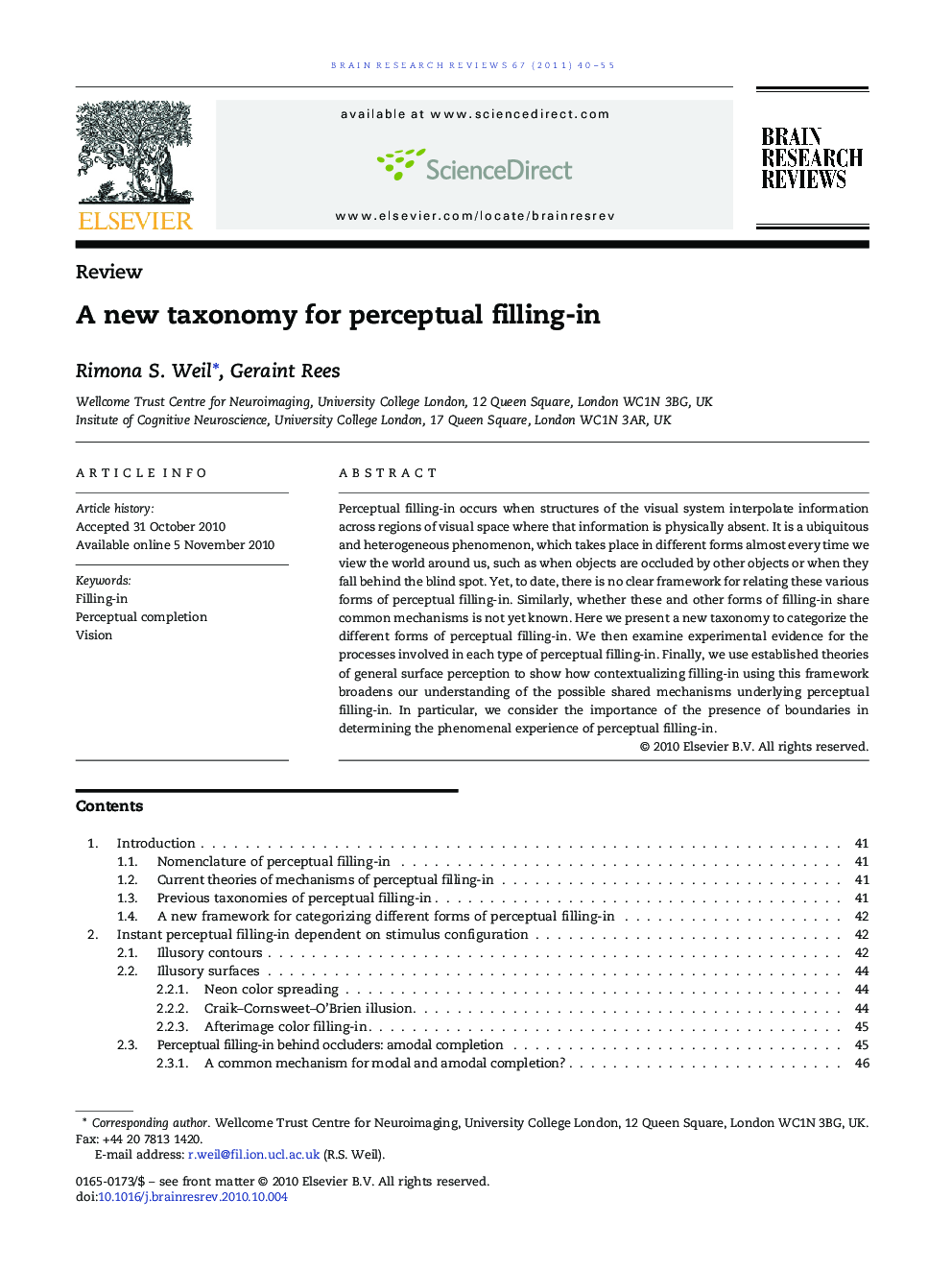| Article ID | Journal | Published Year | Pages | File Type |
|---|---|---|---|---|
| 6265945 | Brain Research Reviews | 2011 | 16 Pages |
Perceptual filling-in occurs when structures of the visual system interpolate information across regions of visual space where that information is physically absent. It is a ubiquitous and heterogeneous phenomenon, which takes place in different forms almost every time we view the world around us, such as when objects are occluded by other objects or when they fall behind the blind spot. Yet, to date, there is no clear framework for relating these various forms of perceptual filling-in. Similarly, whether these and other forms of filling-in share common mechanisms is not yet known. Here we present a new taxonomy to categorize the different forms of perceptual filling-in. We then examine experimental evidence for the processes involved in each type of perceptual filling-in. Finally, we use established theories of general surface perception to show how contextualizing filling-in using this framework broadens our understanding of the possible shared mechanisms underlying perceptual filling-in. In particular, we consider the importance of the presence of boundaries in determining the phenomenal experience of perceptual filling-in.
Research Highlights⺠We propose a new taxonomy for perceptual filling-in. ⺠We review experimental evidence for different forms of filling-in. ⺠We show how this new framework sheds light on mechanisms for perceptual filling-in. ⺠We consider the importance of boundaries in perceptual filling-in.
